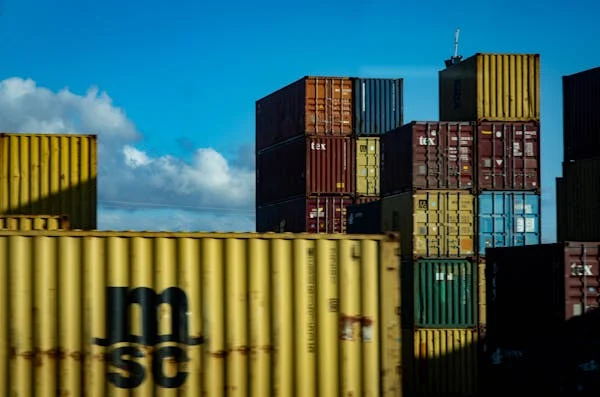Shipping Fabric from Guangzhou/Shenzhen to Salzgitter Port, Germany via Sea Freight
1. Shipping Options: FCL and LCL
There are two primary shipping options for transporting fabric from China to Germany by sea:
Full Container Load (FCL): FCL shipping involves booking an entire container for your goods. The options for FCL include both 20-foot and 40-foot containers, depending on the volume of fabric to be shipped. A 20-foot container is ideal for smaller shipments, while a 40-foot container can accommodate larger volumes. The FCL option is typically preferred for bulk shipments as it provides a faster, more secure transit.
Less than Container Load (LCL): If the shipment is smaller and does not require an entire container, LCL shipping is a cost-effective alternative. LCL allows you to share container space with other goods, reducing the overall shipping cost. The disadvantage of LCL is that it may take a little longer for the shipment to arrive, as it requires consolidation at the origin and deconsolidation at the destination.
2. Shipping Duration: 32 Days
The sea journey from China’s Guangzhou or Shenzhen ports to Salzgitter Port typically takes around 32 days. This timeframe may vary depending on specific shipping routes, weather conditions, and potential delays at customs or port congestion. The total time includes both the maritime transit and any handling required at the ports of departure and arrival.

3. Packaging of Fabric for Sea Freight
Proper packaging is critical to ensure the fabric arrives in excellent condition, protected from damage due to moisture, physical impact, or contamination during the shipping process. Below are the best practices for packaging fabric for sea freight:
Wrapping: The fabric should be tightly wrapped in plastic film or waterproof polyethylene to protect it from water and humidity, which are common during sea transport. This helps prevent the fabric from absorbing moisture, which could damage the material or lead to mold growth.
Palletization: For LCL shipments, where the fabric will be handled multiple times, placing the wrapped fabric on wooden pallets is recommended. This makes it easier to load, unload, and stack the fabric securely within the container.
Cartons and Boxes: In some cases, fabric may be packaged into cartons or boxes to provide an additional layer of protection. This is particularly important for delicate fabrics that may be susceptible to damage from friction or sharp objects.
Labelling: Each package of fabric should be clearly labelled with the contents, the destination, and any handling instructions (e.g., “Fragile” or “Keep Dry”) to ensure proper care during transit.
Container Loading: When loading fabric into an FCL container, care should be taken to stack the fabric boxes or bales evenly to prevent shifting during transport. For LCL shipments, the freight forwarder will typically handle the consolidation of various goods, ensuring your fabric is securely stored in the container.
4. Costing and CIF (Cost, Insurance, and Freight)
Shipping costs can vary based on the volume of fabric, the type of container, and the shipping route. With CIF (Cost, Insurance, and Freight) shipping, the seller is responsible for covering the cost of the goods, insurance, and freight up to the destination port (Salzgitter). This means that once the goods arrive at Salzgitter Port, the buyer will be responsible for customs clearance and any import duties or taxes. The CIF agreement provides a level of security for the buyer as it includes insurance for the goods during transit.



